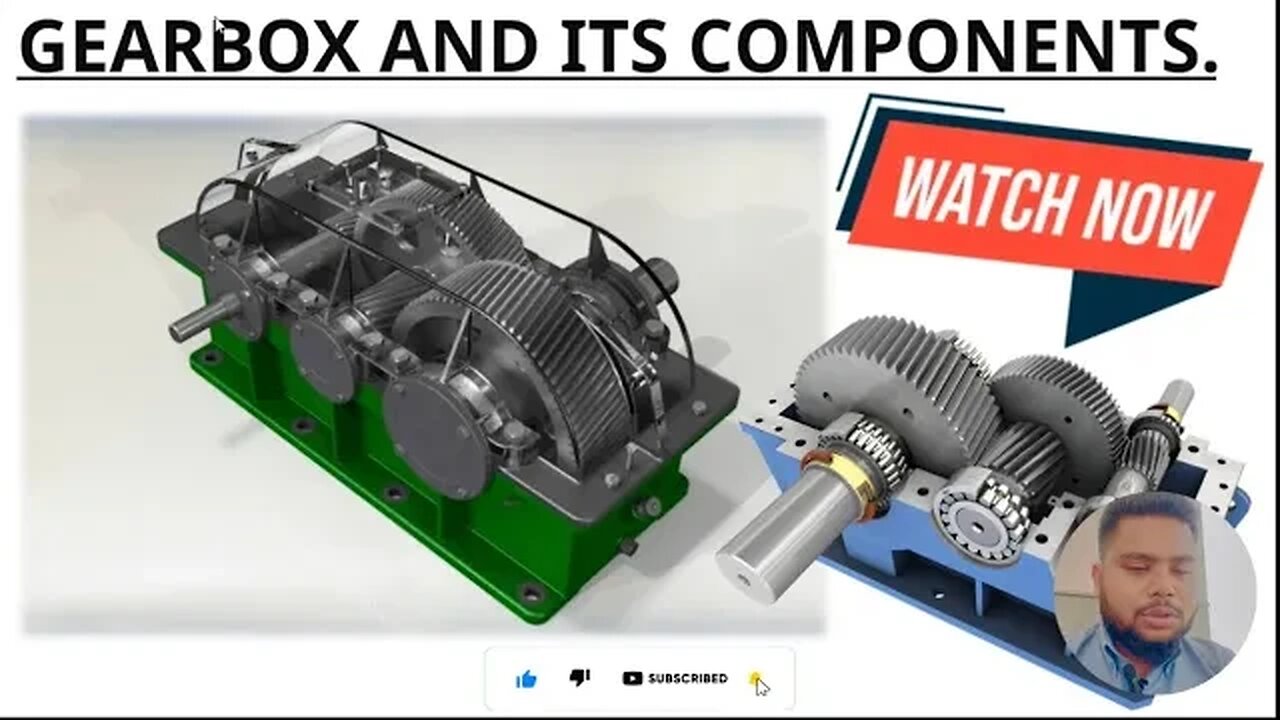Premium Only Content

Gearbox | Gearbox Components | #gearbox #gear #gears5 #learning #engineering #mechanical #drive
A gearbox is a mechanical device used to transmit power from one part of a machine to another by altering the speed, torque, or direction of rotation. Its primary components include:
Gears: Gears are toothed wheels that mesh together to transmit power. They come in various shapes and sizes, including spur gears (straight teeth), helical gears (angled teeth), and bevel gears (conical shape), among others.
Input Shaft: This is the part of the gearbox where power is initially introduced. It connects to the source of power, such as an engine or motor.
Output Shaft: The output shaft delivers power to the intended destination, which could be another machine component or a load.
Gearbox Casing: The casing or housing encloses and protects the gears and other internal components. It also contains lubricants to reduce friction and wear.
Bearings: Bearings support the rotating shafts and gears, reducing friction and allowing smooth movement.
Lubrication System: Gearboxes require lubrication to reduce friction and heat generation. Lubricants are typically oil or grease, and some gearboxes have dedicated systems for lubricant circulation.
Seals and Gaskets: These components help prevent lubricant leakage and keep contaminants out of the gearbox.
Shift Mechanism (if applicable): In manual transmissions, a shift mechanism allows the operator to select different gear ratios. Automatic transmissions use hydraulic systems for this purpose.
Synchronizers (in manual transmissions): Synchronizers help match the speed of the input and output shafts, enabling smooth gear engagement.
Clutch (in manual transmissions): A clutch is used to disconnect the engine from the gearbox temporarily, allowing for gear changes without stopping the engine.
Torque Converter (in automatic transmissions): In automatic transmissions, a torque converter replaces the clutch and helps transmit power smoothly.
Planetary Gears (in automatic transmissions): These specialized gears are used in automatic transmissions to achieve various gear ratios.
The specific components and their arrangement in a gearbox can vary widely depending on the application and type of gearbox, such as manual, automatic, CVT (continuously variable transmission), or others. Each type serves different purposes and offers unique advantages in various industries and machinery
-
 1:00:24
1:00:24
Jeff Ahern
6 hours ago $6.05 earnedThe Sunday Show with Jeff Ahern
33.7K15 -
 LIVE
LIVE
OhHiMark1776
3 hours ago🟢 09-28-25 ||||| Act 3 Continue ||||| Baldur's Gate 3 (2023)
156 watching -
 2:04:33
2:04:33
DooM49
4 hours ago12 Days until Battlefield 6
17.8K1 -
 17:23
17:23
Russell Brand
2 days agoThey couldn't handle this...
136K322 -
 18:18
18:18
DeVory Darkins
1 day ago $32.43 earnedPortland gets NIGHTMARE NEWS as Trump orders Troops to crush violent rioters
77.3K382 -
 1:32:21
1:32:21
JTtheSG
4 hours agoLIVE Replay - Ready To Play VOID BREAKER
12.9K -
 4:43:17
4:43:17
DoldrumDan
7 hours agoNEW STREAM SCHEDULE 3PM EST TO 7PM EST EVERY DAY
38K5 -
 3:45:41
3:45:41
Sgt Wilky Plays
6 hours agoSunday Finals | Regiment Donor Drive
21.8K1 -
 LIVE
LIVE
Ouhel
7 hours agoSUNDAY | Active Matter | Exploring the postapocalyptic | O'HELL LIVE
42 watching -
 7:15:31
7:15:31
Astral Doge Plays!
8 hours agoFinal Fantasy IX ~LIVE!~ Iifa Tree Visitation Hours
15.1K